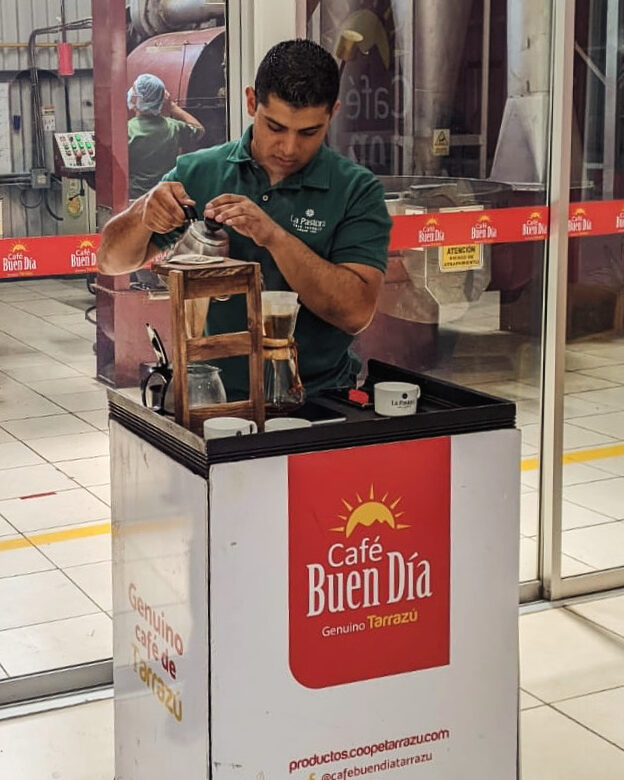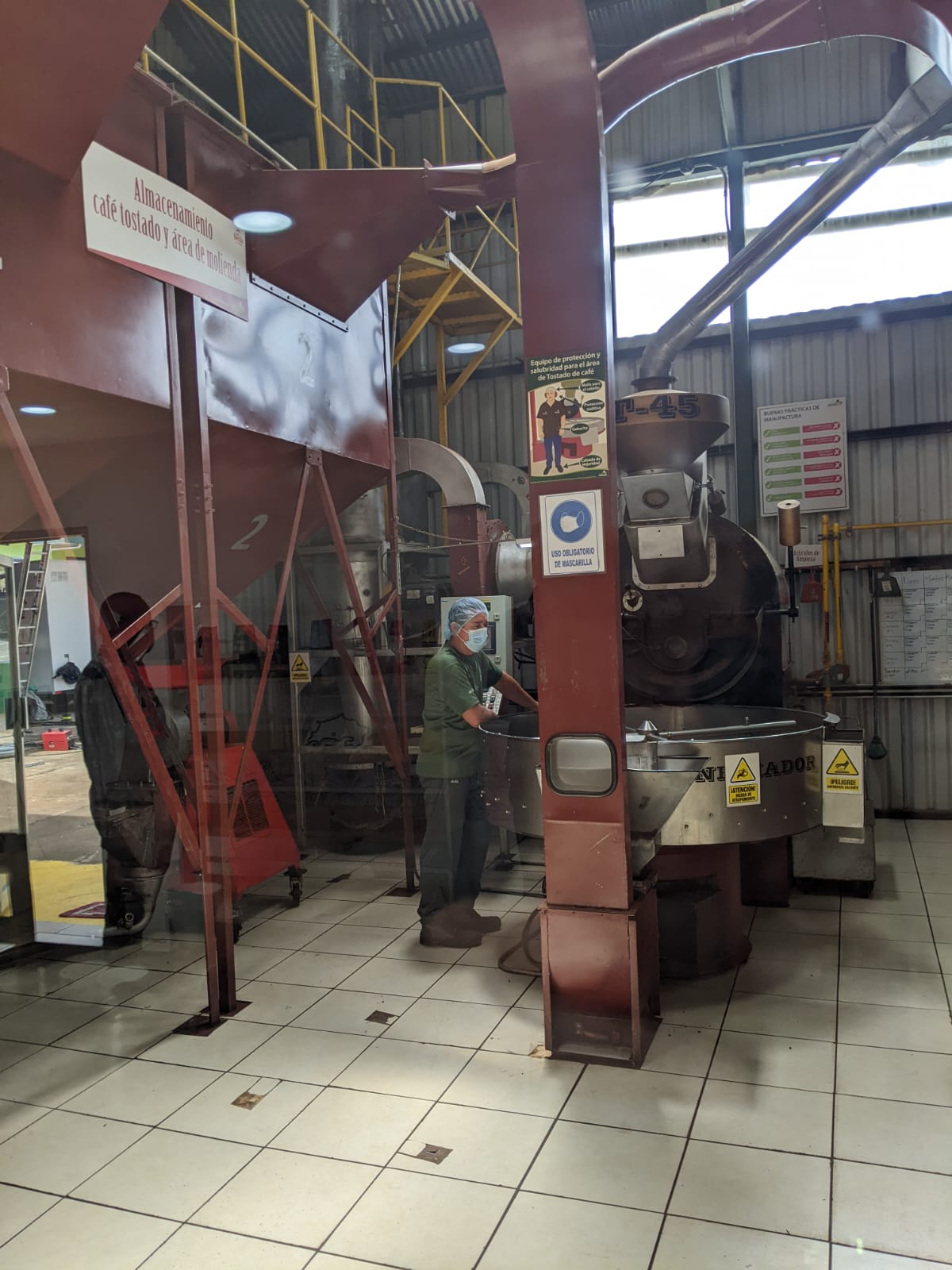The dramatic landscape und lush vegetation of the Tarrazu Valley is reason enough to visit the area, but for a coffee lover it is a kind of paradise. Though the focus of this blog is on speciality coffees produced in micro-mills, my journey round Tarrazu starts at the Coopetarrazu in San Marcos.This is the largest cooperative and a major factor in the development of coffee production since 1960. The cooperative was founded then by 228 coffee farmers who purchased a mill owned by the Banco Nacional. The plant had been established some years earlier with funding by the Banco Nacional on the initiative of Marcus Chanto. Some months later the Coopedota was founded in the same way.
There is sometimes confusion in between the term Tarrazu, often referring to the Tarrazu valley, in which the cantons Dota and Tarrazu are located and which in turn are part of the area loosely known as Los Santos. Coopetarrazu is located in San Pablo, Coopedota in Santa Maria de Dota. Coffee with the official denomination “Tarrazu” must be grown in the cantons of Dota, Tarrazú or León Cortés, in the Tarrazú Valley region. Correctly Tarrazu coffee must have an official seal of denomination. The official denomination “Tarrazu” assures the adherence to quality and other standards, but this does not mean that Los Santos coffees are of a lesser quality. in fact two neighbouring producers may be labelled Tarrazu or Los Santos depending on whether or not the farm has applied for recognition, a process which includes some expense.This sounds and is for me confusing but all concerned in coffee production are relaxed about this, “we are all brothers”.
Coffee arrived in the Tarrazu at the end of the 19th century or in 1898 to be exact. The history of coffee development in the area is fascinating, but will be the subject of a separate article.
With just short of five thousand members, Coopetarrazu today gives small landowners access to the international market, to training and to assistance in technical matters. This has enabled many landowners to make a living or later to develop their farms and create their own micro-mills.
With nearly five thousand members bringing in large quantities of cherries during the harvest, coopetarrazu prepares beans and roasts for the high volume home and export markets. The quality of the processing is high and much attention is paid to sustainability. Traceability is limited by the production out of a high number of small quantities, but the limitation by area and quality control of the members ensures a quality if not individual product.
During a cupping session, the marketing manager presented the range of roasts designed for this market segment. As he said, not everybody wants to drink the more expensive specialty coffees and many more are looking for a more standardised product which can be drunk with added sugar and milk.
The cooperative runs a finca which is largely used for testing new varieties and new fertilizers or environment friendly pest control, also for growing seedlings for the members. The produce of the finca is included in the general production. In October the production facilities where still quiet, but I enjoyed a demonstration of the roasting process followed by a tasting of the “Buen Dia” product, carefully prepared with a Chemex using 1:18 coffee/water and three minutes filter time.

My thanks to the staff, for an informative and professional presentation.
